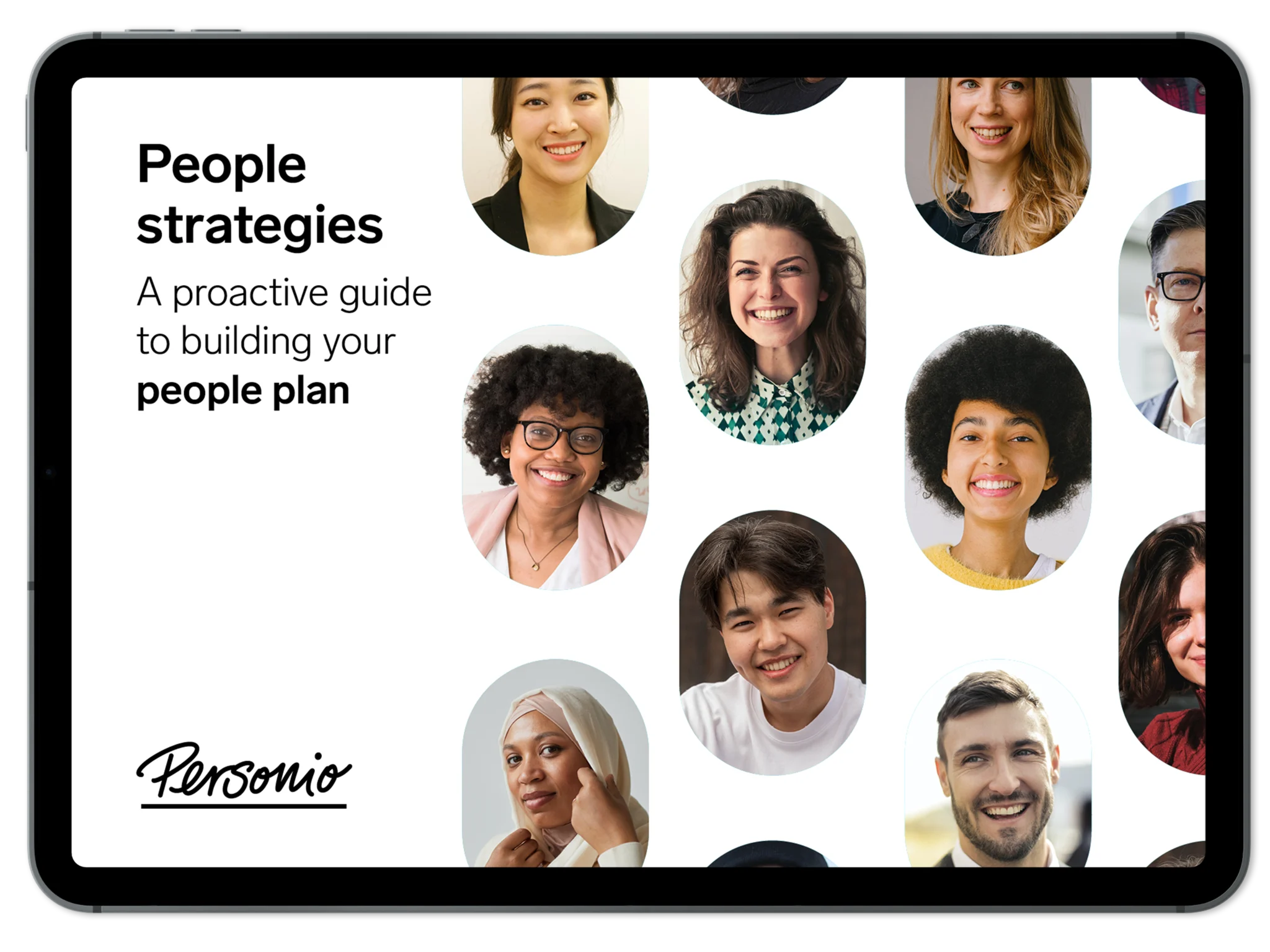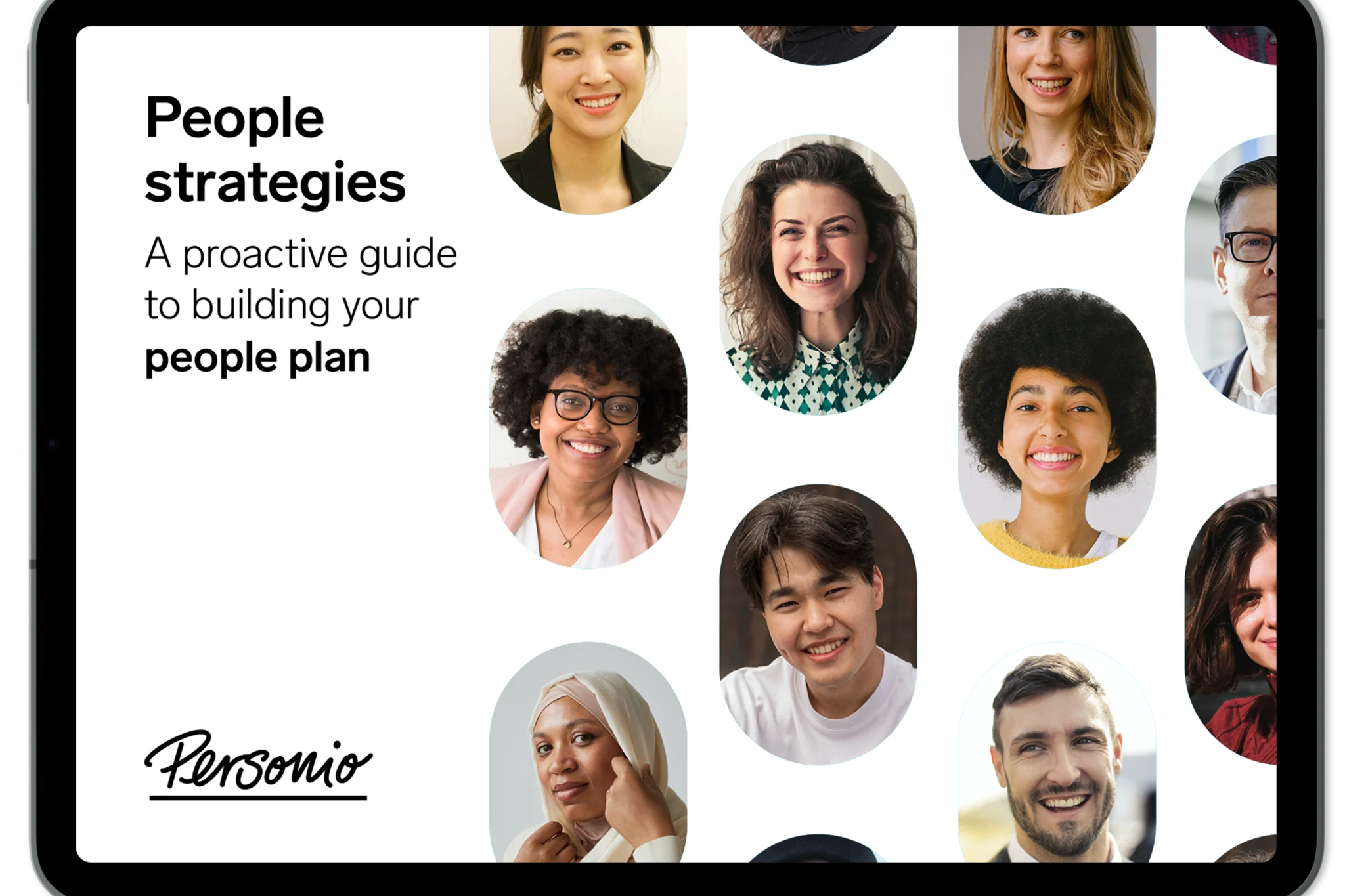Mastering the art of workforce management
Effective workforce management can help you to get the most out of your workforce by boosting productivity — ultimately leading to more efficient operations and a healthier bottom line. In this article, we detail how workforce management works and best practices to manage it well.
Check critical workforce insights, like atrition rates in seconds.Contents
- 1What is workforce management?
- 2Core components of workforce management
- 3The role of technology in workforce management
- 4Best practices for effective workforce management
- 5Challenges and pitfalls in workforce management
- 6Workforce management examples
- 7Personio: your solution for effective workforce management
What is workforce management?
Workforce management (WFM) is a set of processes used to maximise organisational productivity. It most often involves scheduling the right number of staff for each day, analysing data to identify gaps in coverage, and using forecasting tools to predict (and meet) the organisation’s future needs.
What are the goals of workforce management?
The main goal of workforce management is to build a more productive workforce. Ultimately, this is done to fulfil your organisation’s vision. However, workforce management can help to:
Deliver better customer service by helping everyone work efficiently
Ensure payroll accuracy by implementing accurate time-tracking tools
Reduce employee stress by ensuring adequate coverage
Comply with local, national and union laws and regulations
Increase employee engagement across your organisation
Core components of workforce management
Here are some core components that are typically included in an organisation’s workforce management activities.
Employee scheduling
Setting schedules for shift workers is no easy task. You need to know you’ll have enough workers on the ground to cover your needs — but you don’t want to waste money paying people who don’t need to be there.
That’s why staff scheduling is one of the most important parts of workforce management. It involves looking at historical data to determine how many workers you need on a given day.
Depending on the nature of your business, it might also involve allocating certain tasks to employees who are best suited to them, increasing your overall efficiency as an organisation.
Time and attendance tracking
Tracking the time your employees spend at work is essential for accurate and timely payroll, especially if your employees work inconsistent hours or do a lot of overtime.
But tracking attendance also has another goal: it can help you to identify any potential gaps in coverage caused by planned or unplanned absences. For example, you might need to schedule additional employees to cover those who are off sick or on annual leave.
Attendance tracking can also help you to spot longer-term problems, and provide a starting point for dealing with chronic issues of absenteeism and tardiness.
Talent management
Talent management is the process of recruiting, attracting, onboarding and developing talent. Essentially, it covers everything you do as a company to ensure you have the employees you need, and that those employees have the skills, knowledge and resources they need.
Good talent management should encourage employees to work to their strengths and help them to grow through training and development. Talent management can reduce staff turnover, drive innovation and help you get more out of your workforce.
The role of technology in workforce management
These days, technology plays an important role in workforce management. While it’s theoretically possible to forecast demand, manage budgets and schedule employees manually, this isn’t an efficient way of doing things.
Instead, most organisations use workforce management software to simplify and automate many or all of these tasks.
Workforce management software
Workforce management software allows organisations to manage their workforce without hours of admin time.
For example, tools like Personio allow users to:
Easily track employees’ time to ensure payroll accuracy
Manage employee absences without complex processes
Quickly onboard new employees with automated processes, checklists and templates
Store employee data safely in one place
Conduct regular performance reviews to keep everyone on track
Data analytics and reporting
Workforce management tools can also give you access to valuable data and analytics, which can help you to make more informed decisions.
For example, a sudden decrease in performance localised to one particular department might signal that something is going wrong within that team.
With this information, you’ll be able to investigate and determine the best steps to take to get things back on track.
Best practices for effective workforce management
Here are some best practices to follow if you want your workforce management to be effective.
Clear, two-way communication
Workforce management requires clear communication between managers and employees so that everyone understands what’s expected of them. But communication is also a two-way street: seeking feedback from your employees (and actually listening to it) can help you make sure everyone is working to their full potential.
Flexibility and adaptability
Workforce needs are constantly changing, and it’s important not to be too rigid in your approach to workforce management. For example, over the past few years, some employees have found that they prefer working remotely to coming into an office — and even work better this way.
Leaving room in your workforce management plan for this type of flexible arrangement can help you improve employee satisfaction and retain your employees for longer. In many cases, this can also result in improved productivity (the whole point of workforce management) since it means your employees are working in the way that best suits their needs.
Continuous improvement
Every organisation’s needs change over time, and it’s important to regularly review your workforce management strategies to make sure they’re still working for you. For example, changes to the way your company operates or a shift in consumer demand could mean that you need more (or fewer) employees on shift at a given time than you did a year ago.
By revisiting your strategy frequently and adjusting it as needed, you can make sure your workforce is always at its most effective.
Challenges and pitfalls in workforce management
Of course, there are also some challenges involved in implementing new workforce management practices. Here are some things you might need to overcome.
Resistance to change
Whenever you introduce a new system or process, you’re likely to be met with at least some resistance from your employees. To avoid this becoming a problem, you should communicate clearly with your workforce throughout the implementation process.
By doing this, you can make sure they fully understand why you’re implementing the new system and how it will impact them. You should also be prepared to listen to your employees’ concerns and to adapt your processes if needed.
Data security
Any tool that you use to monitor and manage employees is necessarily storing information about them — and you have a duty to keep that information safe. You should always check out the security credentials of any new technical tool you’re planning to implement to ensure you’re not putting your employees’ data at risk.
Balancing costs and benefits
When it’s done right, workforce management can help you save time on administrative tasks, and boost your bottom line by improving productivity across your organisation.
But software tools do cost money — and it’s important to make sure they’re worth the investment before you commit. One way to do this is to look at the company’s customer success stories or online reviews to find out what savings their existing clients have made, and whether these are enough to justify the price of the software.
Workforce management examples
Still unclear how workforce management works in practice? Here are a few examples to help you understand.
Example #1: Fast-food restaurant
Jane is the manager of a fast-food restaurant and is in charge of creating the employees’ rota each week. She needs to make sure that there will be enough staff to fulfil orders quickly, but not so many that some people have nothing to do.
To figure out the best way to schedule her staff, Jane uses software to look at the restaurant’s hourly sales figures over the past six months and finds that the busiest periods are between 12pm and 2pm and between 5pm and 8pm on weekdays, and from 10am to 3pm on Saturdays. Jane can then build the schedule by making sure there are more staff on shift during those busy periods than at quieter times. This will both keep customers happy and make sure staff aren’t overworked during busy periods. It will also ensure that the company doesn’t waste money on unnecessary staffing costs.
Example #2: Call centre
A manager at a call centre, James, realises that his team’s productivity levels have dropped slightly over the past few months. The staff typically work a rotating shift pattern, with shifts being either early (8am–3pm) or late (2pm–10pm).
James uses software that tells him how many customer cases each employee closes each day. To his surprise, he finds that one employee, Margaret, closes 15% more cases when she works the late shift. And another employee, Bill closes 12% more on the early shift.
By talking to the employees in question, James realises that they both feel they are more productive at certain times of day: Bill in the morning, and Margaret in the afternoon. After discussing this with them, James agrees to prioritise scheduling Bill for the early shift and Margaret for the late shift — maximising productivity for the team.
Personio: your solution for effective workforce management
For effective workforce management, you need access to accurate, real-time and historical data about your workforce.
Personio is an all-in-one HRIS that can help you to simplify, streamline and automate a whole range of HR tasks. Essentially, it becomes the home of your HR operations, giving you all the information you need in one place.
You can also use Personio to track attendance, manage absences, and source, attract and onboard new employees — everything you need to get the most out of your workforce.
Want to find out more? Book your free demo to get started.



